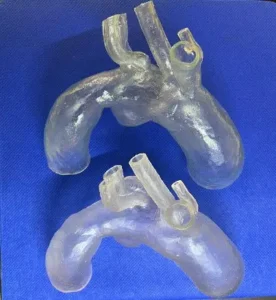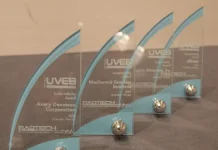The RadTech 2024 Conference and Exhibition returned to Orlando, Florida from May 20-22. Held at the Hyatt Regency Orlando, more than 75 exhibitors were present at the world’s largest event dedicated to the educational, technical and scientific advancement of ultraviolet (UV) and electron beam (EB) technologies. Attendance was up 20% over the past two events with significant end-user participation, especially from industrial markets, consumer electronics, battery and coil coatings.
The event began with educational short courses on Sunday, May 19. Then, three days of technical sessions and expert panels followed, featuring industry advances and applications related to a multitude of markets in which energy-curable technologies are used. Vat photopolymerization for 3D printing and additive manufacturing applications also were featured during RadTech 2024, and these sessions were curated by the Photopolymer Additive Manufacturing Alliance (PAMA), a collaboration between the National Institutes for Standards and Technology (NIST) and RadTech with the goal of bringing commonly accepted standards and practices to the field of photopolymers additive manufacturing.
During a reception at the event, the RadTech Technical Review Committee announced the RadLaunch Class of 2024. Now in its seventh year, RadLaunch recognizes start-up ideas and innovations in the application of ultraviolet and electron beam technologies. The 2024 class spotlights the superior precision, functionality, tunability and versatility of UV/EB technologies, enabling a range of next-generation processes and products.
UV-Cured Bio-Based CO2 Sequester Adhesive
 Nvirovate Materials, Inc.
Nvirovate Materials, Inc.
Nvirovate Materials have developed a portfolio of bio-based, compostable soybean oil adhesives that are UV cured. Utilizing technology based on a patent portfolio licensed from Oregon State University, Nvirovate has formulated and produced the only bio-based pressure sensitive adhesives in the world that are CO2 negative, compostable and as a result of UV cure only require 15% of the energy to process as compared to legacy fossil fuel-based adhesives.
Volumetric 3D Printing, Subzero Molding/Casting and Agile Methodologies, Potentially Reshaping the Landscape of 3D Solar and Battery Cell Manufacturing
 Topshelf Enterprises DBA T3DP
Topshelf Enterprises DBA T3DP
These cutting-edge technologies enable the efficient creation of intricate micro and macro parts from glass, metal and ceramics at subzero and room temperatures, significantly enhancing production precision. By adopting agile methodologies, manufacturers can swiftly adapt to evolving market demands and technological advancements. This integration significantly boosts scalability and adaptability, promising transformative impacts on the manufacturing processes in the solar, battery, micro-optics, and generativity designed auto parts.
Photoresponsive Coatings with Targeted Antibacterial Behavior
 Azodent, Inc.
Azodent, Inc.
Scientists at the University of Colorado, have designed a polymer coating that can be used to prevent biofilm accumulation and infections on implants, prostheses, catheters and endoscopes. This technology is being commercialized by Azodent Inc., with a wide range of potential applications in the industrial coatings market, including for non-stick coatings, touch screens and de-ice coatings for aircraft. Additionally, the photoresponsive material also can selectively inhibit dental cavities, causing bacteria, and regenerate dental pulp to initiate the formation of dentinal ridges. Such genus-specific inhibition and regenerative properties within the same material are rare in dentistry, therefore the dental market is likely the initial market for this technology.
Seamless Nanopatterned Coatings to Enable Large-Area Metamaterials with UV Technology
 Smart Material Solutions (SMS)
Smart Material Solutions (SMS)
SMS is a precision engineering company developing scalable nanofabrication methods, tooling and materials for large-area nanopatterning. Its dedicated team of materials scientists and mechanical engineers integrates seamless cylindrical molds with roll-to-roll manufacturing to add new functionalities to surfaces. SMS’s technology includes forming a UV-cured layer with trillions of micro and nano structures per square meter, which may serve as an outer coating or resist. By tailoring these structures, SMS can cater to a diverse range of metamaterial interests, including solar energy, biosensors, virtual reality, self-cleaning surfaces and more.
3D-Printed Anatomical Models with Thiol-ene UV-Curable Coatings
 Maedditiva, Tecnologico de Monterrey
Maedditiva, Tecnologico de Monterrey
Identifying a need for 3D-printed soft, transparent, patient-specific anatomical models with high fidelity, suitable for cardiovascular applications like pre-procedural planning, training and flow visualization, the group developed a simple method that involves the use of thiol-ene coating as a post-processing step to flexible SLA 3D-printed parts, increasing the transparency of the final product, while adjusting the mechanical properties close to those of human aortic tissue and retaining a high anatomical fidelity. Thus far the group’s “phantoms” have been utilized in 13 complex surgeries and by medical companies to test new stent graft designs.






